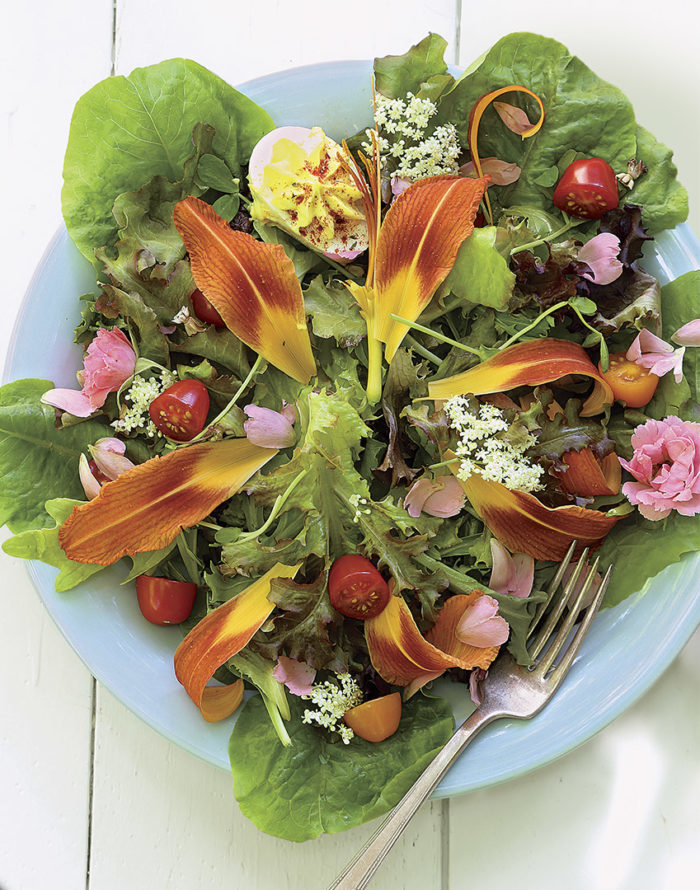
For years we’ve seen flowers used as garnishes. Peppery nasturtium flowers (Tropaeolum spp. and cvs., annual) add a nice bite to salads, and violets (Viola spp. and cvs., USDA Hardiness Zones 3–9) are a pretty, edible accent, though they don’t have much taste. Many flowers are safe to eat, but for a flower to make it into my pantry, I want a bloom that’s unusual, delicious, and beautiful. Does that seem like a lot to ask? You might be surprised by how many flowers fit those criteria. If you’re feeling adventurous, here are 10 excellent edible flowers you may have in your own backyard.
Bee balm petals taste warm and spicy
Name: Monarda didyma and cvs.
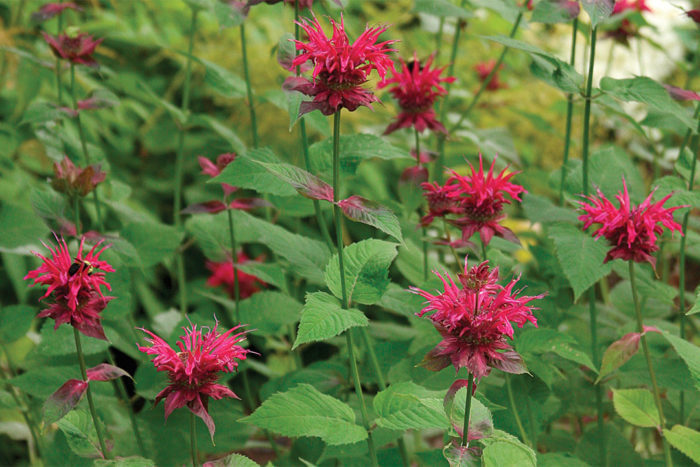
The leaves and flowers of bee balm have a warm, spicy flavor that makes a wonderful oregano substitute. Flowers bloom in early to midsummer, but the foliage is tasty throughout the growing season, as long as it’s free of powdery mildew. Harvest the flowers just after they’ve opened and are at their freshest. This will give you the brightest color and strongest flavor. Use bee balm fresh or dried, as you would any herb; it works well alone or in dry rubs and marinades for meat and fish. Toss individual flower petals into a green salad or sprinkle them on top of a light-colored soup like vichyssoise for visual and gustatory impact. Bee balm makes one of my favorite herbal vinegars. One or two flowers in a bottle of white vinegar adds color and warmth to the liquid.
Zones: 4 to 9
Size: Up to 3 feet tall and 2 feet wide
Conditions: Full sun to light shade; fertile, moist, well-drained soil
Rose petals can be eaten fresh or cooked
Name: Rosa spp. and cvs.
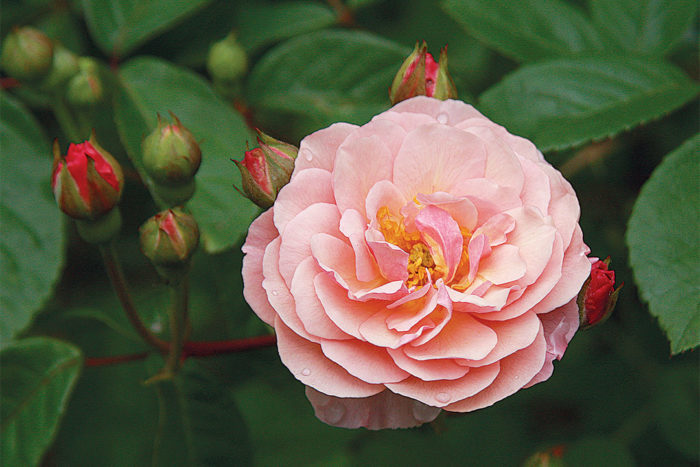
All roses produce edible petals, as long as they’re not sprayed with toxic pesticides or grown near a busy road or parking lot. Flavor varies among varieties, but in general, the more fragrant the flower, the tastier the petal. Use raw petals in salads or to decorate cakes and cookies. Rose petal jam is silky and sweet and uses whole, softened petals. Rose simple syrup can be made with either fresh or dried petals, then used in cocktails, sorbet, or icing. You also can infuse cream with rose petals for ice cream or custard. Rose petals are included in many Middle Eastern and Indian recipes, and are an essential ingredient in the Moroccan spice mix ras el-hanout.
Zones: 2 to 11
Size: Up to 10 feet tall and wide
Conditions: Full sun; moist, well-drained soil
Lilac blossoms are crunchy and sweet-tart
Name: Syringa vulgaris and cvs.
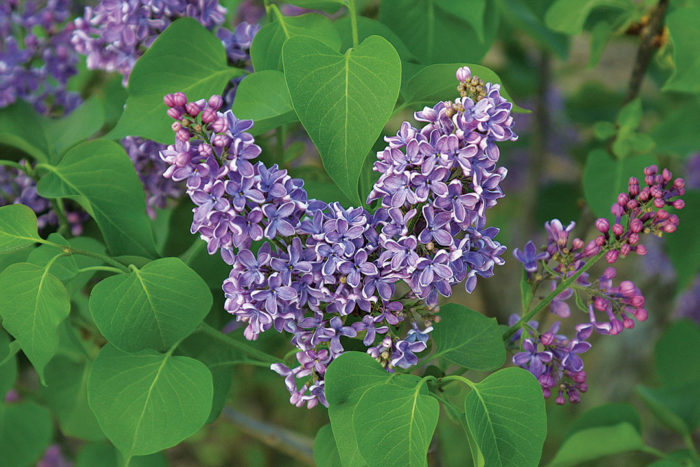
Lilacs bloom in late spring to early summer, and the best flowers are sweet and tart and make a satisfying pop when you bite into them. However, the taste can vary from plant to plant and some can be bitter, so taste one or two before you harvest. Lilac flowers are best eaten raw, so you can appreciate their crunchy texture and small bursts of sweet-tartness. Toss them into salads, stir them into vanilla yogurt, sprinkle them on top of lemon sorbet, or use them to decorate your favorite seasonal cake or cookies. Lilac flowers also make a sweet, fragrant wine that tastes like a soft spring evening. Purple and white flowers are edible.
Zones: 3 to 8
Size: Up to 20 feet tall and wide
Conditions: Full sun; fertile, well-drained soil
Rose of sharon flowers are profuse and multipurpose
Name: Hibiscus syriacus and cvs.
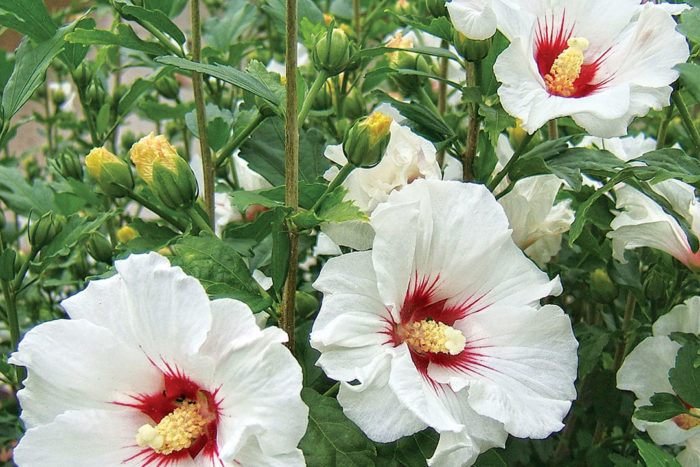
I admit I’m kind of breaking my own rule here because rose of Sharon flowers have a pleasant, mild, vegetal taste—nothing unusual. However, the shape and malleability of the bloom give them extra-credit points in my cookbook. The shrubs produce so many large flowers from mid- to late summer that you won’t miss a few when you harvest some for the kitchen. Collect the flowers as soon as they are fully open. Remove the pistils and stamens from the center of the blooms, and use the flowers as serving bowls for cottage cheese or dips. Or stuff flowers with herbed goat cheese, press the petals closed, dip them in beaten egg and breadcrumbs, and bake them. Petals can also be used raw in salads.
Zones: 5 to 11
Size: Up to 10 feet tall and 6 feet wide
Conditions: Full sun; moist, well-drained soil
Redbud has tangy buds and blooms
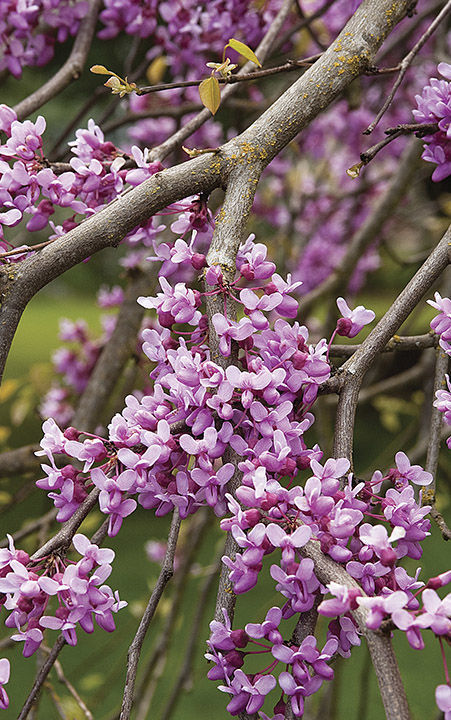
Name: Cercis canadensis and cvs.
Redbud trees bloom before they leaf out in spring, and the flowers are showy. The closed buds and the newly opened flowers are edible. The taste is a little tangy, with the opened flowers having a slightly sweeter taste than the closed buds. The texture is crunchy, especially when raw. Unopened buds can be pickled and used instead of capers. Flowers and buds can be tossed raw in salads or used to decorate iced cakes or cupcakes. They lose some color when baked but still make a nice addition to breads, muffins, and pancakes.
Zones: 4 to 9
Size: Up to 30 feet tall and wide
Conditions: Full sun to light shade; fertile, moist, well-drained soil
Elderberry pollen holds the flavor
Name: Sambucus spp. and cvs.
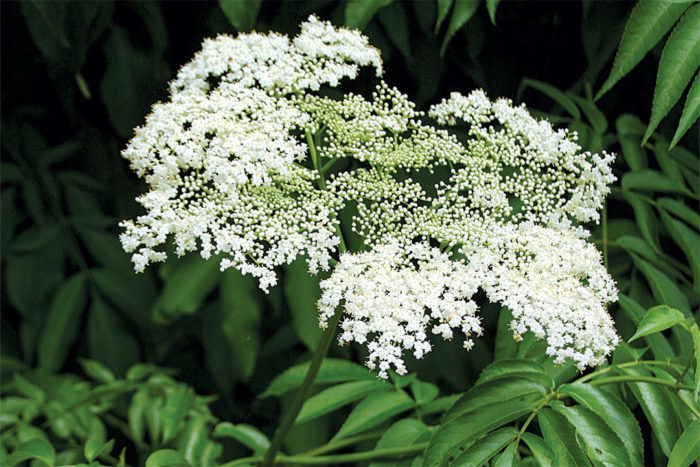
Elderflowers open in late spring to early summer and should be picked as soon as they’re available. Rain washes away the pollen and, with it, much of the fragrance and flavor. Elderflower pollen contains a natural yeast that promotes fermentation. Elderflower champagne is the quintessential summer beverage: light, lemony, fizzy, and just barely alcoholic. Fully opened umbels of flowers can be dipped in batter and lightly fried, then sprinkled with confectioner’s sugar to make elderflower fritters. If you think you might like to experiment with elderberries, leave at least half of the flower clusters on the tree or shrub to ripen in late summer.
Zones: 3 to 9
Size: Up to 20 feet tall and wide
Conditions: Full sun to partial shade; fertile, moist, well-drained soil
Tip: Don’t eat just anything!
This is the single most important rule when cooking and eating wild edibles. No matter how pretty that flower looks or how sweet it smells, if you’re not absolutely sure what it is and that it’s safe to eat, don’t do it. Just walk away. Then go home, look it up, and be better prepared for your next foraging outing.
Common daylilies go from ditch to dish
Name: Hemerocallis fulva
If you’ve eaten traditional hot and sour soup, Buddha’s delight, moo shu pork, or anything described as “golden needles” on a Chinese menu, you’ve eaten daylilies. There are many daylily cultivars, but only the straight species, Hemerocallis fulva, is widely accepted as an edible. You can harvest buds and flowers from midspring to midsummer. The buds have a green bean-ish flavor, and the orange petals are useful for their color and ability to thicken liquids. Sauté the buds as a vegetable or use individual petals raw in salads. Dried petals can be powdered and added to risottos or pasta dishes for a pretty orange color. Young, green, tightly closed daylily buds also make an excellent pickle. Preserve them in your favorite dill-infused bean pickling brine.
Zones: 3 to 10
Size: Up to 3 feet tall and wide
Conditions: Full sun; fertile, moist, well-drained soil
Common milkweed flowers are delicate and sweet
Name: Asclepias syriaca
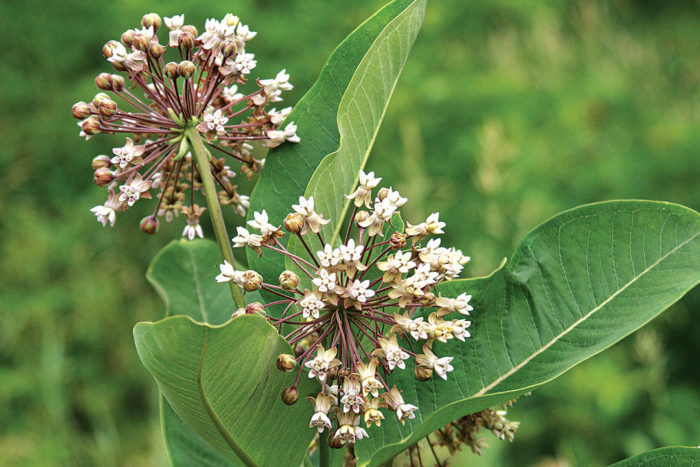
There are many different milkweeds, wild and cultivated, but only Asclepias syriaca is an accepted safe edible. Common milkweed blooms in early to midsummer. Its flowers can be used as tightly closed buds and as fully opened blooms heavy with nectar. The tightly closed flower buds look like miniature broccoli florets and have a pleasant, green, vegetal flavor. Blanch them in boiling water for a minute or two, then sauté or roast them. Fully opened flowers are delicate and contain lots of sweet nectar. They make a naturally pink simple syrup. Combine two cups of individual flowers, loosely packed, with a cup of water and a cup of sugar. Bring to a boil, whisking to dissolve the sugar, then remove it from the heat and let it sit overnight. Strain the flowers from the cooled liquid, and use the simple syrup in sorbet or cocktails.
Zones: 3 to 9
Size: Up to 6 feet tall, spreading indefinitely
Conditions: Full sun; fertile, well-drained soil
Magnolia petals and buds are strong and spicy
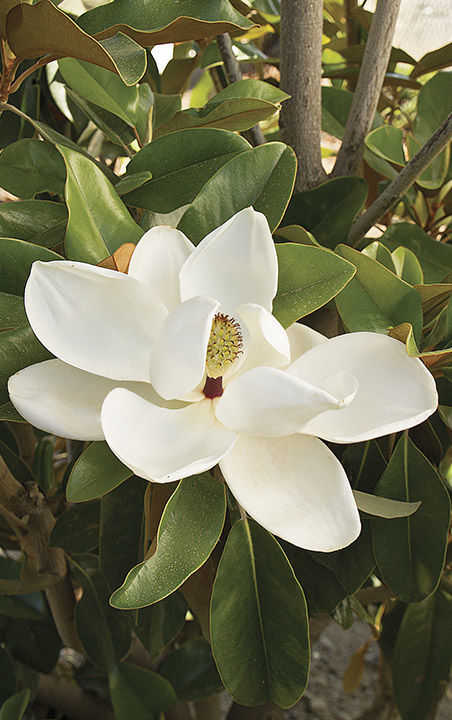
Name: Magnolia spp. and cvs.
The petals and unopened buds of many magnolia species are edible, but I find the large-flowered species, like southern magnolia (M. grandiflora and cvs., Zones 7–9) and saucer magnolia (M. soulangeana and cvs., Zones 5–9), have the best flavor and texture. Pick flowers as soon as they’re open in early to midspring. Taste a petal before you harvest a bunch; I love the flavor, but it’s strong and spicy and doesn’t appeal to everyone. Petals can be used chopped and raw in salads, but the most popular way to eat them is pickled in a mild rice wine vinegar. This isn’t the kind of pickle you eat with your hand. Chop up a few pickled leaves and serve as a condiment with savory dishes like meat and fish. Buds can be harvested in fall when they are tight and hard and furry. The buds have a milder, spicy, warm flavor. Grate them as a spice, and use it in crisp and crumble toppings.
Zones: 3 to 9
Size: Up to 50 feet tall and wide
Conditions: Full sun to partial shade; moist, well-drained soil
Pineapple guava petals are sturdy and spicy-sweet
Name: Acca sellowiana
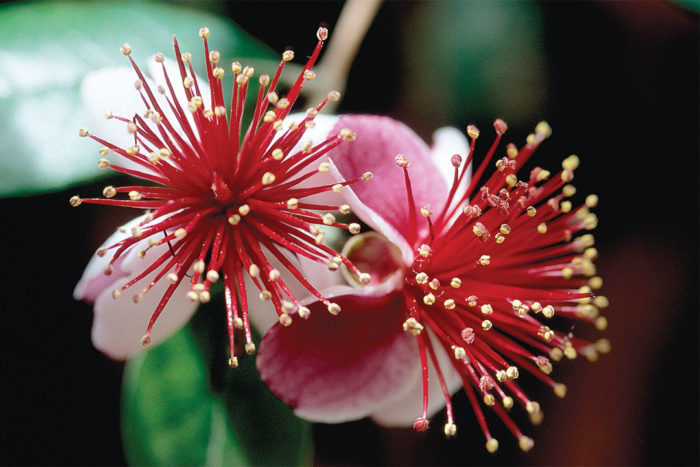
Harvesting the petals of pineapple guava, also known as feijoa, requires special attention. Because the fruit is also edible, you want to leave the pollinated pistils behind to ripen. So, when flowers bloom in late spring, carefully detach the petals without disturbing the pistils and stamens. And if you really want to play it safe, only detach a few petals from each flower so the remainder can do their job of attracting pollinators to the plant. Pineapple guava flower petals are meatier than most. They’re crisp, with a spicy-sweet flavor, and are best used raw so their succulent texture can be fully appreciated. Use them in salads of any kind (green, fruit, pasta) or as the filling for a dainty tea sandwich on soft, white, crustless bread.
Zones: 8 to 11
Size: Up to 15 feet tall and wide
Conditions: Full sun; well-drained soil
Serve up a Helping of Daylilies
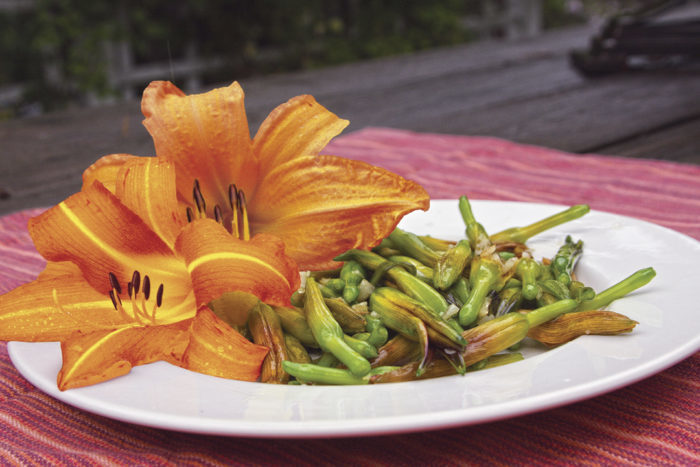
Daylilies are superstars in my book, providing four different edible parts: young shoots, tubers, buds, and flowers. My favorite are the flower buds, which can be eaten from the time they’re completely green until just before they open and are showing hints of orange.
 |
 |
Try a simple preparation first so you can get a feel for the pure taste of a daylily bud. Sauté two cups of daylily buds in two tablespoons of olive oil and one tablespoon minced garlic or onion, just as you might do with green beans. Daylily buds are edible raw, so you don’t need to cook them for long. Heat them through over medium heat, stirring to distribute the garlic evenly, then serve warm.
Ellen Zachos is a garden designer and educator in the New York City metropolitan area and author of Backyard Foraging.
Photos: Michelle Gervais; Carol Collins; Jennifer Benner; wildfeuer/courtesy of commons.wikimedia.org; Doreen Wynja; Stephanie Fagan; Bill Johnson
Sources:
- American Meadows, Williston, Vt.; 877-309-7333; americanmeadows.com
- White Flower Farm, Litchfield, Conn.; 800-503-9624; whiteflowerfarm.com
- Willis Orchard Company, Cartersville, Ga.; 866-586-6283; willisorchards.com


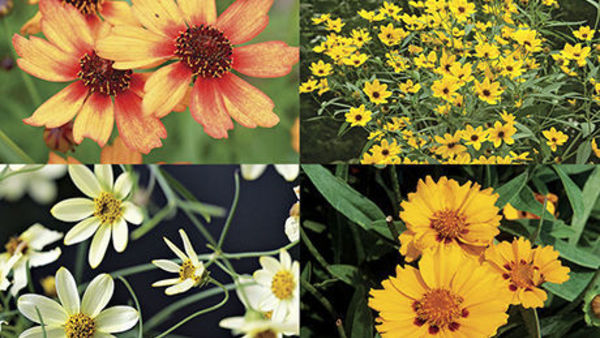
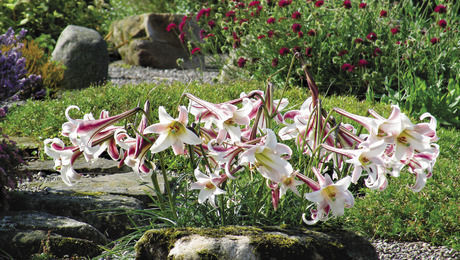
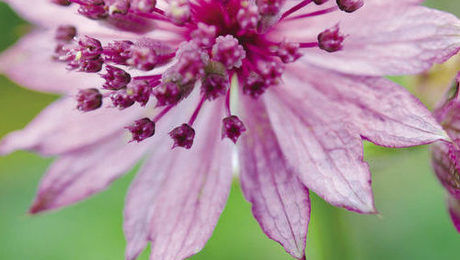
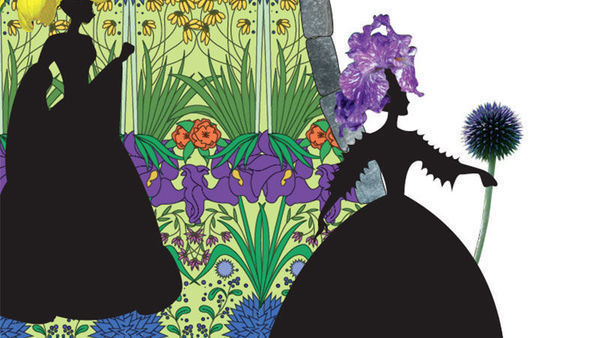












Comments
Log in or create an account to post a comment.
Sign up Log in